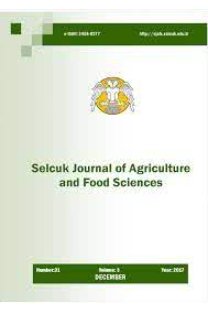Determination of Energy Use Efficiency and Greenhouse Gas Emission (GHG) of Cotton Cultivation in Batman Province: A Case Study from Beşiri District
Determination of Energy Use Efficiency and Greenhouse Gas Emission (GHG) of Cotton Cultivation in Batman Province: A Case Study from Beşiri District
Energy ratio, Cotton, GHG ratio Specific energy, Turkey,
- ISSN: 2458-8377
- Yayın Aralığı: Yılda 3 Sayı
- Başlangıç: 2002
Mine BURHAN, Sait ENGİNDENİZ, Duran GÜLER
Osman ACAR, Lütfi PIRLAK, Mesude Figen DÖNMEZ
Effect of Salt Doses on Biological Values in Durum Wheat
Neslihan DORUK KAHRAMAN, Sabri GÖKMEN
Ferit COBANOGLU, Ayse Demet KARAMAN, Serdal OGUT
Nihat TURSUN, Ali Arda IŞIKBER, Mehmet Hakkı ALMA, Ayşe USANMAZ BOZHÜYÜK
Evaluation of Physical and Quality Traits of Local Potato Breeding Lines During Long Term Storage
Doublehaploidization Efficiency of Selected Pepper Genotypes Via in Vitro Anther Culture
Münevver İLHAN, Ertan Sait KURTAR
Faiza UROOJ, Muhammad Zafar IQBAL, Muhammad SHAFIQ
